
Keszthely: The Jewel of Lake Balaton
Discover Keszthely, the historical gem of Lake Balaton, boasting baroque architecture, serene beaches, and vibrant cultural festivals in Hungary's picturesque heartland.
Keszthely is a charming town located on the western shore of Lake Balaton, the largest lake in Central Europe. Rich in history and culture, Keszthely is known for its stunning architecture, vibrant festivals, and serene natural beauty. The town's centerpiece is the majestic Festetics Palace, an 18th-century baroque castle that now houses the Helikon Castle Museum. Wander through its beautifully landscaped gardens and explore the lavishly decorated rooms to get a glimpse of aristocratic life in Hungary. Just a short walk from the palace is the picturesque Keszthely Beach, perfect for swimming, sunbathing, and water sports. The beach area also features numerous cafés and restaurants where you can sample local Hungarian cuisine while enjoying views of the shimmering lake. The town's historic main square, Fő tér, is lined with charming shops and cafés, making it a wonderful place to relax and soak in the local atmosphere. For those interested in history and culture, Keszthely offers several museums, including the Balaton Museum, which provides insight into the region's natural history and archaeological finds. Additionally, the town hosts various cultural events throughout the year, such as the Keszthely Summer Festival and the Helikon Festival of Folk Art. With its rich cultural heritage and beautiful lakeside setting, Keszthely is a must-visit destination in Hungary.
Local tips in Keszthely
- Visit Festetics Palace early in the morning to avoid crowds.
- Bring comfortable shoes for walking around the lake and town.
- Try the local fish dishes at restaurants near the beach.
- Check local event schedules to experience traditional Hungarian festivals.
- Rent a bike to explore the scenic trails around Lake Balaton.
Keszthely: The Jewel of Lake Balaton
Keszthely is a charming town located on the western shore of Lake Balaton, the largest lake in Central Europe. Rich in history and culture, Keszthely is known for its stunning architecture, vibrant festivals, and serene natural beauty. The town's centerpiece is the majestic Festetics Palace, an 18th-century baroque castle that now houses the Helikon Castle Museum. Wander through its beautifully landscaped gardens and explore the lavishly decorated rooms to get a glimpse of aristocratic life in Hungary. Just a short walk from the palace is the picturesque Keszthely Beach, perfect for swimming, sunbathing, and water sports. The beach area also features numerous cafés and restaurants where you can sample local Hungarian cuisine while enjoying views of the shimmering lake. The town's historic main square, Fő tér, is lined with charming shops and cafés, making it a wonderful place to relax and soak in the local atmosphere. For those interested in history and culture, Keszthely offers several museums, including the Balaton Museum, which provides insight into the region's natural history and archaeological finds. Additionally, the town hosts various cultural events throughout the year, such as the Keszthely Summer Festival and the Helikon Festival of Folk Art. With its rich cultural heritage and beautiful lakeside setting, Keszthely is a must-visit destination in Hungary.
When is the best time to go to Keszthely?
Iconic landmarks you can’t miss
Kastélypark
Discover the tranquil beauty of Kastélypark in Keszthely, Hungary, a perfect blend of nature and history for every tourist.
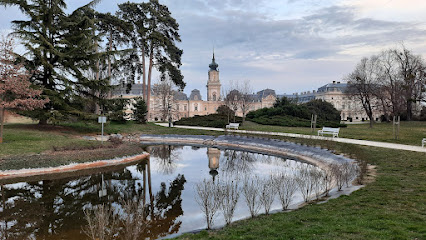
Festetics Palace
Explore Festetics Palace in Keszthely, a stunning baroque castle with lush gardens and rich cultural history, perfect for history lovers and nature enthusiasts alike.
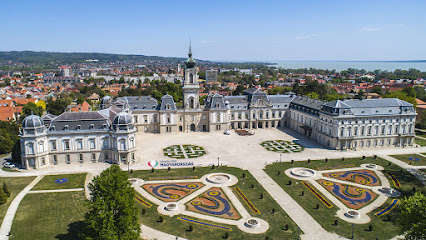
Municipal Beach
Experience the vibrant atmosphere and stunning beauty of Keszthely Municipal Beach, the perfect destination for relaxation, recreation, and unforgettable moments at Lake Balaton.
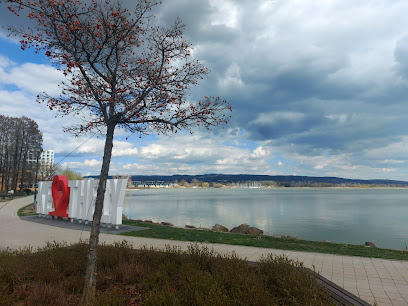
Mikus Gyula sétány
Experience the beauty and tranquility of Mikus Gyula Sétány, a picturesque park in Keszthely, Hungary, perfect for relaxation and family fun.
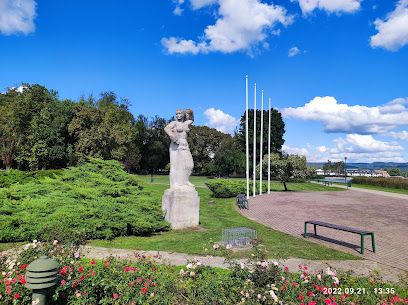
Keszthely Móló
Discover the serene beauty of Keszthely Móló, a lakeside promenade offering stunning views, local culture, and delightful leisure activities on the shores of Lake Balaton.

Vadászati és Modellvasút Múzeum
Discover Hungary's rich heritage at the Vadászati és Modellvasút Múzeum, where hunting and model railroads collide in an interactive experience for all ages.
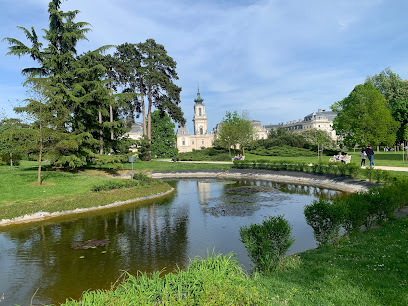
Libás Strand
Discover Libás Strand, a vibrant swimming lake in Keszthely, perfect for families with beach sports, dining, and stunning sunsets.
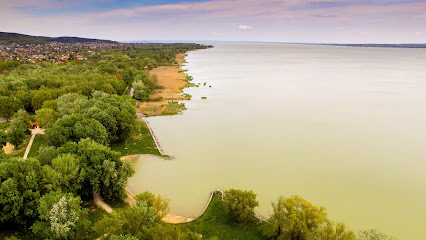
Rezi castle
Explore Rezi Castle, a historical fortress in Hungary, offering stunning views, rich heritage, and a serene escape into the past.
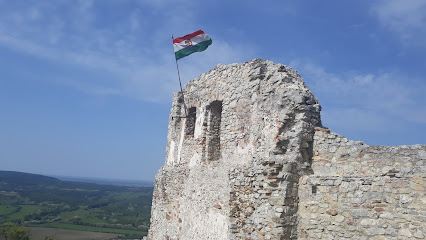
Helikon Beach
Discover the pristine beauty and relaxation of Helikon Beach, a serene lakeside paradise on Lake Balaton, perfect for families and sunbathers.
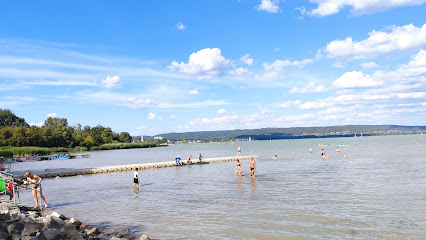
Balaton Museum
Discover the captivating history and culture of the Balaton region at Keszthely's Balaton Museum, a must-visit cultural center for all tourists.
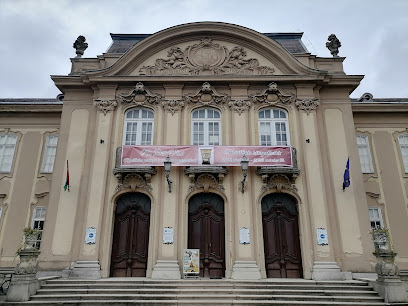
Helikonpark
Explore Helikonpark in Keszthely, a lush green haven of beauty and history, perfect for picnics, leisure walks, and family fun amid stunning landscapes.
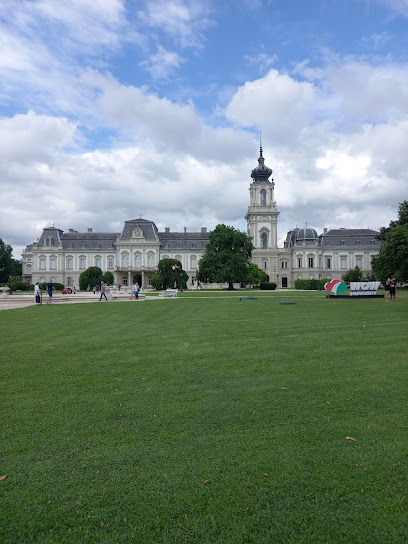
Keszthely Pláza
Discover the vibrant shopping experience at Keszthely Plaza, where local charm meets international brands in the heart of Hungary.
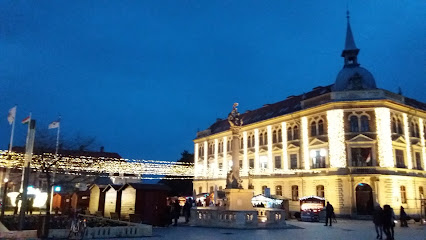
Keszthely Sign
Discover the charm of Keszthely at the iconic Keszthely Sign, a vibrant landmark perfect for memorable photos and local exploration.
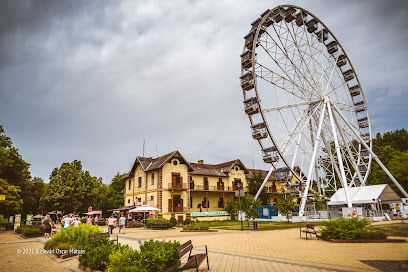
Hunting Museum & Coach Museum
Uncover Hungary's hunting and equestrian history at the Hunting Museum & Coach Museum in Keszthely, a captivating cultural experience.
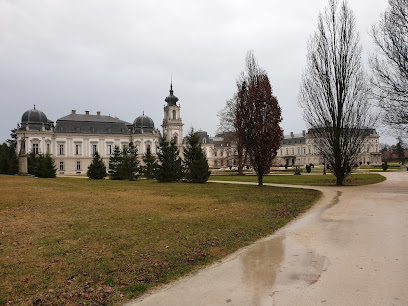
Erotic Renaissance Wax Museum
Discover the captivating world of erotic art at Keszthely's unique Erotic Renaissance Wax Museum, a must-see for adventurous travelers.
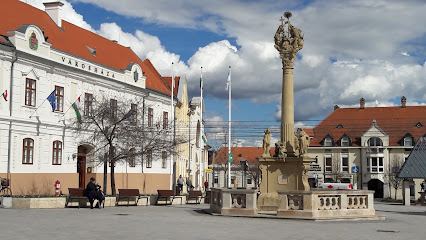
Unmissable attractions to see
Tapolcai-tavasbarlang Látogatóközpont
Explore the stunning underground lakes and unique geological wonders at Tapolca Cave Lake Visitor Center, a must-see attraction in Hungary.
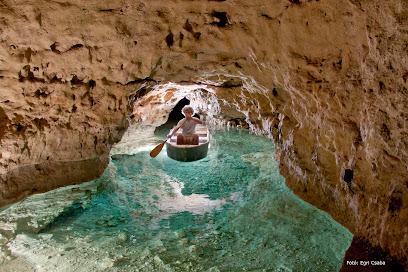
Municipal Beach
Enjoy sun-soaked days at Keszthely Municipal Beach, the ultimate destination for relaxation and fun along the shores of Lake Balaton.

Lake Balaton
Discover the enchanting allure of Lake Balaton, Hungary's largest lake, offering stunning vistas, outdoor activities, and rich cultural experiences.
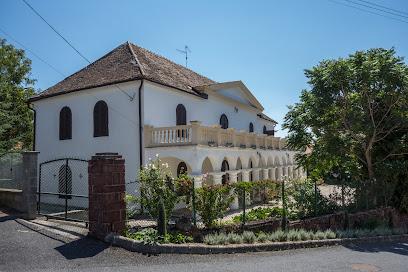
Mikus Gyula sétány
Explore Mikus Gyula Sétaány in Keszthely - a family-friendly park with playgrounds, lush greenery, and a vibrant atmosphere perfect for relaxation.
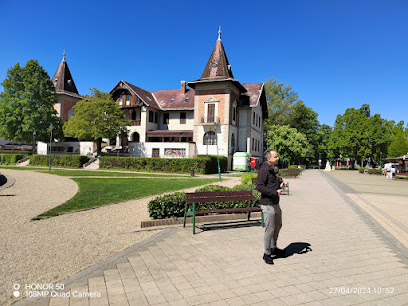
Vadászati és Modellvasút Múzeum
Explore the Vadászati és Modellvasút Múzeum in Keszthely, Hungary – a unique blend of hunting history and captivating model railways.

Helikonpark
Experience the tranquility and natural beauty of Helikonpark in Keszthely, Hungary - a must-visit destination for nature lovers and families.
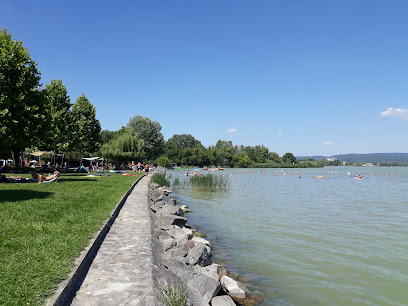
Kis-Balaton Látogatóközpont
Explore the stunning landscapes and rich biodiversity at Kis-Balaton Látogatóközpont, a unique nature attraction in Hungary.
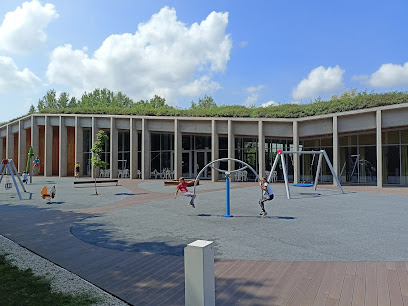
Our Lady of Hungary Church
Explore the spiritual and architectural beauty of Our Lady of Hungary Church, a historical gem in the heart of Keszthely, Hungary.
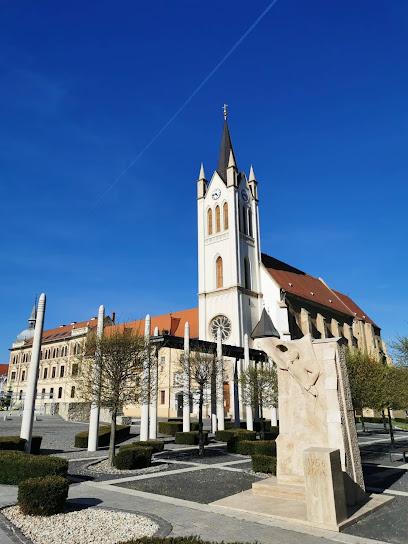
Hunting Museum & Coach Museum
Discover Hungary's hunting heritage and exquisite coach designs at the Hunting Museum & Coach Museum in Keszthely, a captivating cultural experience.
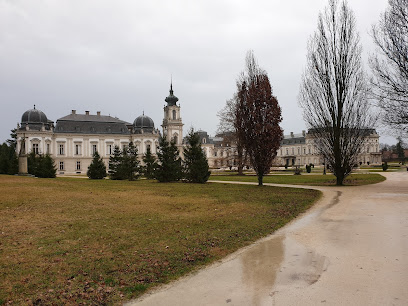
Big Meadow
Experience the breathtaking scenery and family-friendly activities at Big Meadow in Gyenesdiás, Hungary's serene park destination near Lake Balaton.
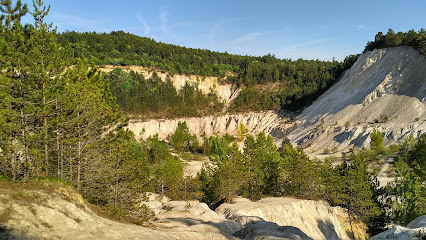
Amazon House
Experience the wonders of the Amazon rainforest at the captivating Amazon House museum in Keszthely, Hungary.
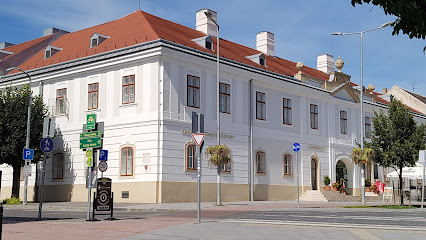
Csigaparlament
Explore Csigaparlament in Keszthely, Hungary, a unique museum dedicated to the fascinating world of snails and their crucial role in the ecosystem.
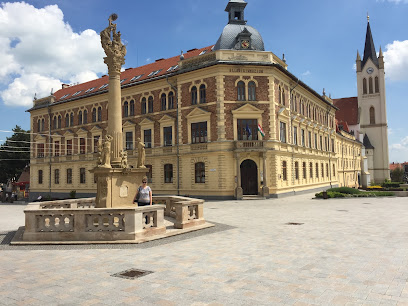
Magyar Mezőgazdasági Múzeum és Könyvtár Georgikon Majortörténeti Kiállítóhely
Explore Hungary's agricultural legacy at the Magyar Mezőgazdasági Múzeum, where history meets family-friendly fun in Keszthely.
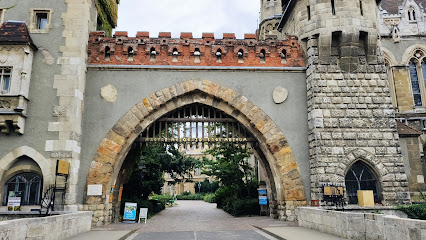
Horrorarium and Torture Museum
Explore the chilling depths of history at the Horrorarium and Torture Museum in Keszthely, where dark tales and eerie artifacts await.

Padkűi Kilátó
Discover the breathtaking vistas and serene beauty of Padkői Kilátó, a hidden gem in Hungary perfect for nature lovers and photographers.
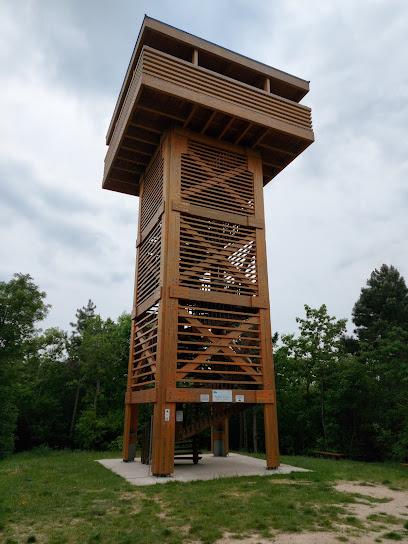
Essential places to dine
Jóbarát Vendéglő
Discover authentic Hungarian flavors at Jóbarát Vendéglő in Keszthely - where every dish tells a story.
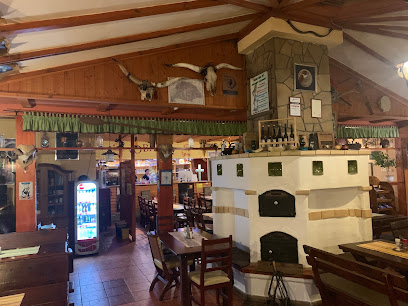
Tompos Restaurant
Discover authentic Hungarian cuisine at Tompos Restaurant in Keszthely, where every meal tells a story of tradition and taste.
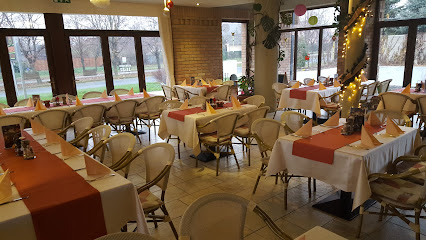
John's Pub Keszthely - Bar & Kitchen
Experience authentic Hungarian cuisine at John's Pub Keszthely - your go-to restaurant near Lake Balaton.
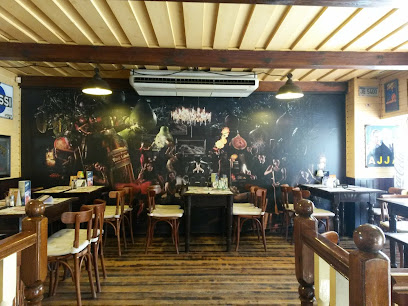
Halászcsárda
Experience authentic Hungarian cuisine at Halászcsárda in Keszthely - a must-visit destination for food lovers seeking traditional flavors.
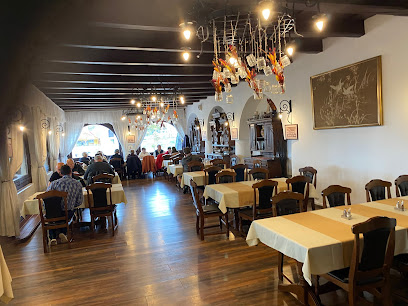
Vadaskert Vendéglő
Experience authentic Hungarian cuisine at Vadaskert Vendéglő in Keszthely - where every dish tells a story.
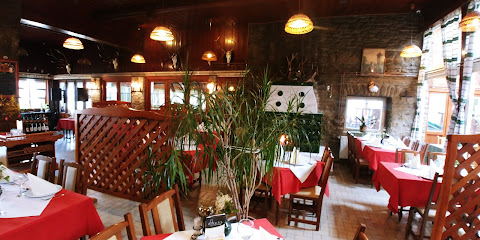
Giuseppe Pizzéria
Experience authentic Italian cuisine at Giuseppe Pizzéria in Keszthely - home of delicious pizzas and warm hospitality.
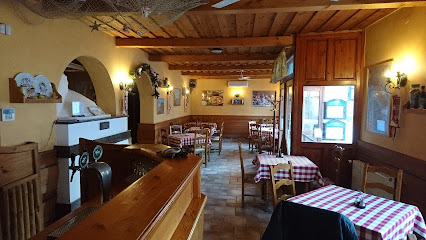
Sailing Bistro
Discover Sailing Bistro by Lake Balaton: Enjoy fresh Hungarian cuisine with stunning lakeside views in Keszthely.

Los Amigos Bár & Grill
Experience authentic Mexican flavors at Los Amigos Bár & Grill in Keszthely – where every meal is a fiesta!
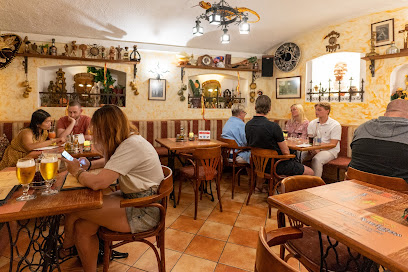
Apetito Étterem
Experience authentic Hungarian flavors at Apetito Étterem in Keszthely – where tradition meets culinary excellence.
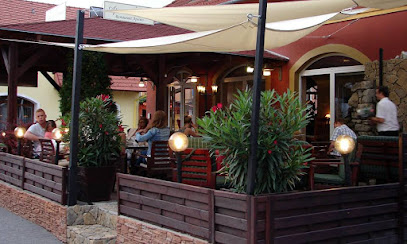
Capitano Pizzeria
Discover authentic Italian flavors at Capitano Pizzeria in Keszthely - where every slice tells a story.
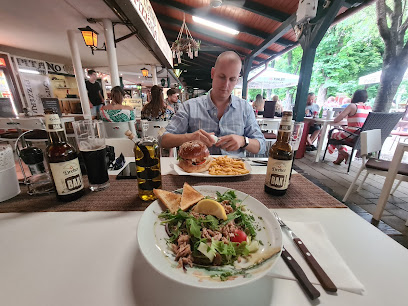
Park Vendéglő Bt.
Discover the rich flavors of Hungary at Park Vendéglő Bt., where traditional cuisine meets modern dining in Keszthely.
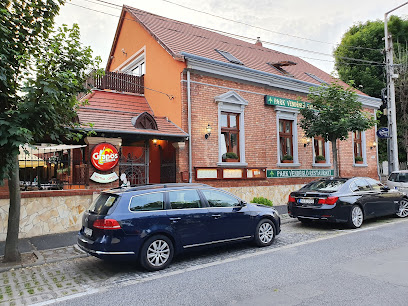
Pajti
Discover authentic Hungarian flavors at Pajti Bistro in Keszthely - where every meal is a celebration of local cuisine.
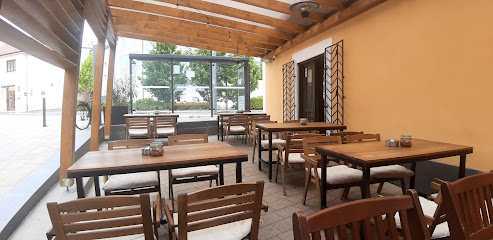
OLD Smokey Burger Keszthely
Discover the ultimate burger experience at OLD Smokey Burger Keszthely - where every bite is a flavorful adventure!
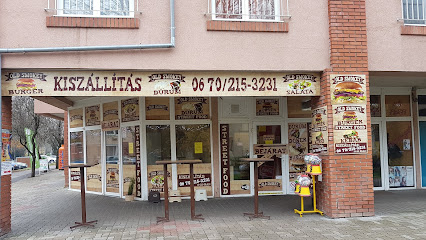
Móló Terasz
Discover Móló Terasz: A lakeside gem offering exquisite Hungarian cuisine and stunning views of Lake Balaton.
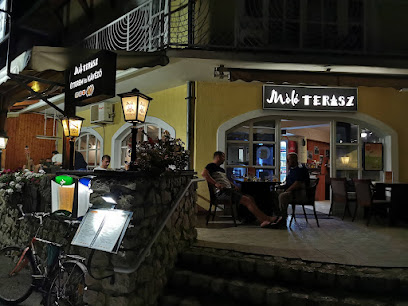
Royal Keszthely
Discover the exquisite flavors of modern European cuisine at Royal Keszthely – where tradition meets contemporary dining in beautiful Keszthely.
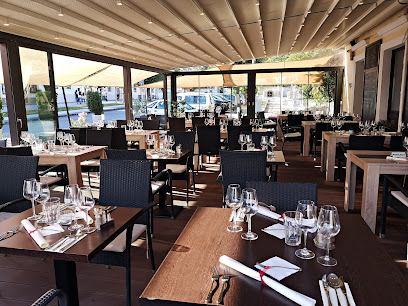
Markets, malls and hidden boutiques
Alphapark
Explore Alphapark in Keszthely for an unforgettable shopping experience with diverse stores, delicious dining, and family-friendly fun.
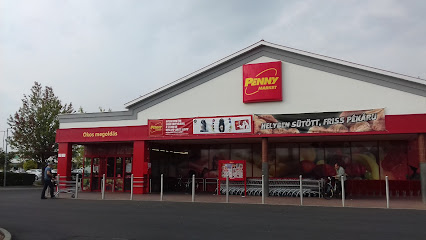
Keszthely Pláza
Explore Keszthely Pláza, a vibrant shopping mall in Hungary offering diverse retail, dining, and entertainment options for an unforgettable experience.

STOP SHOP
Explore STOP SHOP in Keszthely, a vibrant shopping destination with diverse shops, delicious dining, and family-friendly entertainment.
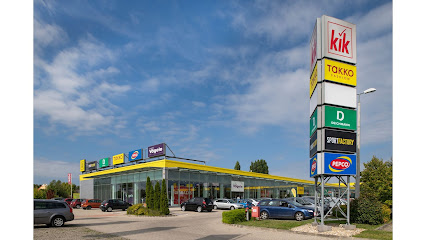
Euro Sarok
Explore Euro Sarok in Keszthely for unbeatable discounts on a wide range of products, making your travel budget stretch further.
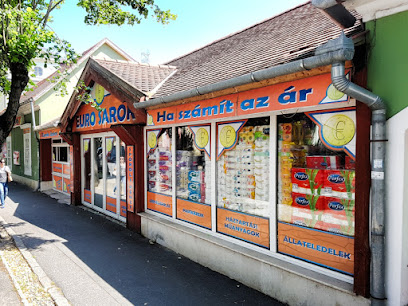
Victoria Sportbolt
Discover quality sporting goods and expert advice at Victoria Sportbolt, Keszthely's leading destination for sports enthusiasts.
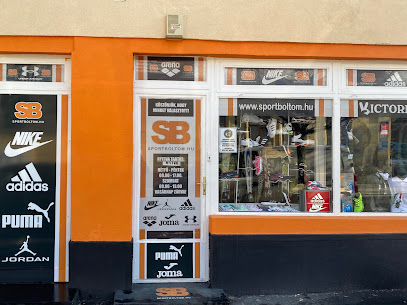
Dockyard Keszthely
Explore Dockyard Keszthely for a unique shopping experience in the heart of Keszthely, featuring clothing, shoes, and sportswear for every style.

Humidorshop.hu
Explore Humidorshop.hu in Keszthely for exquisite gifts and accessories, showcasing unique Hungarian craftsmanship in a charming setting.
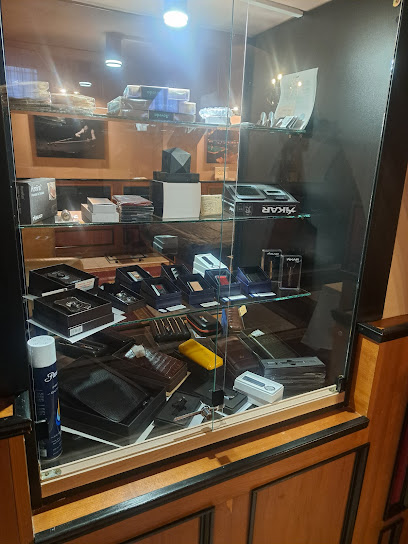
Bőrsarok Táska üzlet- Samsonite ,táska,utazótáska,poggyász
Explore Bőrsarok Táska for premium leather bags and luggage in Keszthely, where quality meets style for every traveler.
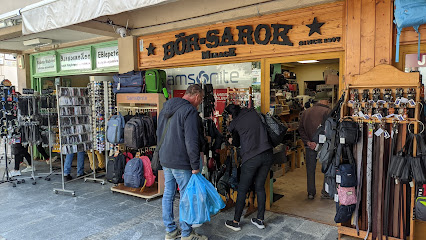
Patent Stúdió Kft.
Explore the latest fashion trends at Patent Stúdió Kft. in Keszthely, where local culture meets contemporary style.
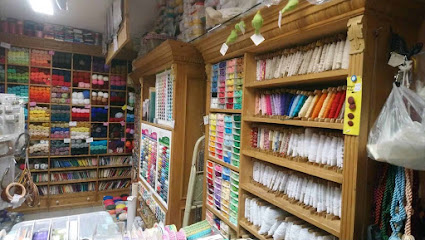
Magyar Áruk Boltja
Explore Hungarian fashion and unique souvenirs at Magyar Áruk Boltja, Keszthely's charming clothing store offering local craftsmanship.

Noncesso Butik
Explore Keszthely's Noncesso Butik for a unique selection of stylish dresses that cater to every occasion and personal style.

Simple Fehérnemű üzlet
Explore Simple Fehérnemű in Keszthely for stylish, comfortable lingerie with personalized service in a charming boutique atmosphere.
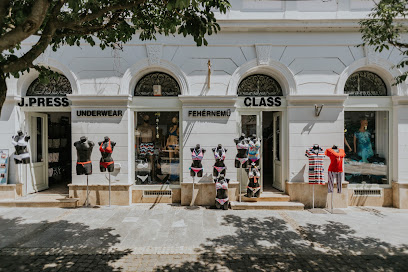
Rinascimento
Discover stylish fashion at Rinascimento, Keszthely’s premier clothing store, offering the latest trends and a unique shopping experience.
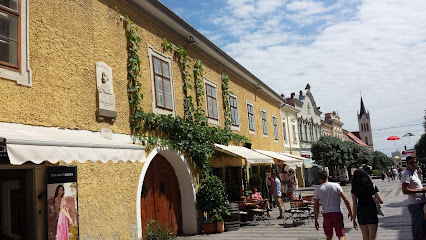
Mando Divatáruház
Explore unique fashion trends at Mando Divatáruház, a premier clothing store in the heart of Keszthely, Hungary, offering styles for every wardrobe.
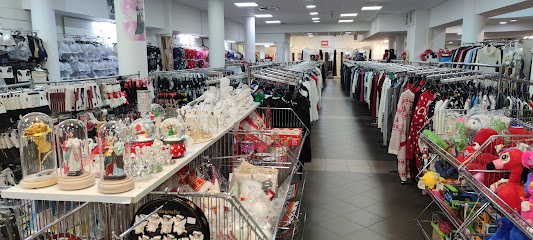
Souvenir
Explore the vibrant world of local crafts and unique souvenirs at Souvenir, Keszthely's premier gift shop.
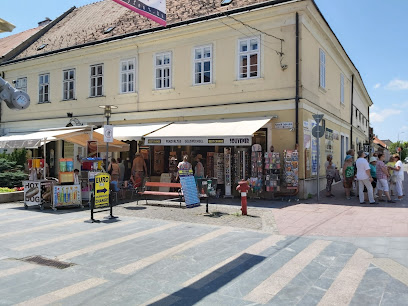
Essential bars & hidden hideouts
John's Pub Keszthely - Bar & Kitchen
Experience the flavors of Hungary at John's Pub in Keszthely, where delicious cuisine meets a warm and inviting atmosphere.
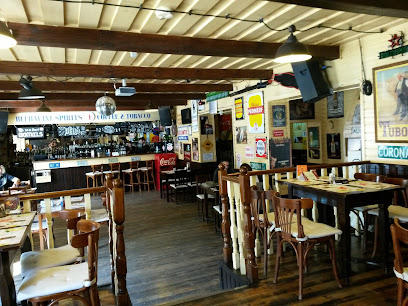
Tulipán Kávéház
Discover the delightful flavors of Tulipán Kávéház in Keszthely, where coffee, brunch, and desserts meet in a charming atmosphere.
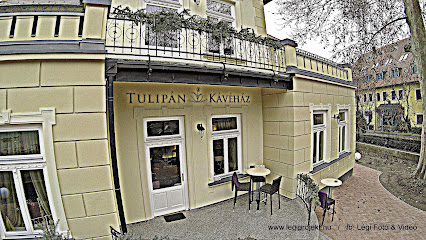
Los Amigos Bár & Grill
Experience authentic Mexican cuisine at Los Amigos Bár & Grill in Keszthely, where vibrant flavors and a lively atmosphere come together for an unforgettable dining experience.
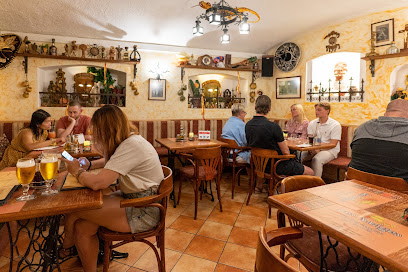
Pajti
Discover the perfect blend of local flavors and cozy ambiance at Pajti Bistro in Keszthely, Hungary.
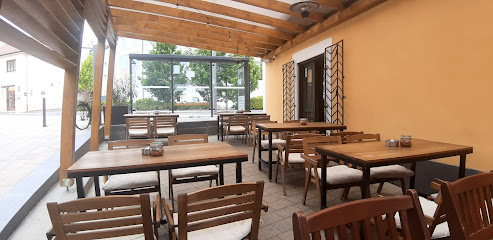
No1 Szalon
Experience bowling, darts, and delectable pizzas at No1 Szalon in Keszthely for an unforgettable outing.
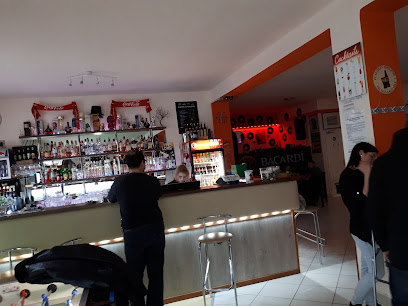
Csaba Winery
Discover the flavors of Hungary at Csaba Winery, a cozy wine bar in Keszthely, perfect for wine lovers and casual visitors alike.
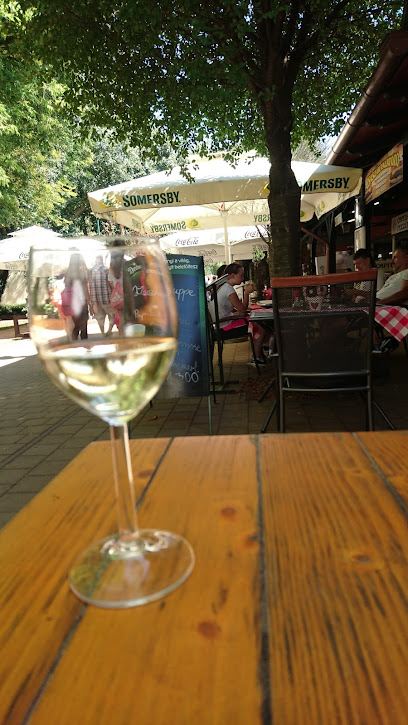
Kanyar Bárkonyha
Experience authentic Hungarian cuisine at Kanyar Bárkonyha, where tradition meets taste in the heart of Keszthely.
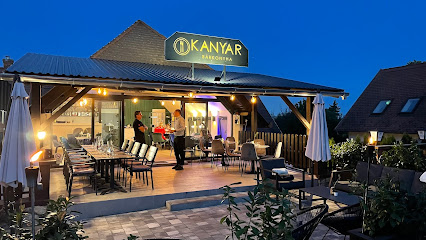
Helikon Söröző
Experience the charm of Helikon Söröző, a cozy pub in Keszthely offering local brews and delicious snacks in a friendly atmosphere.
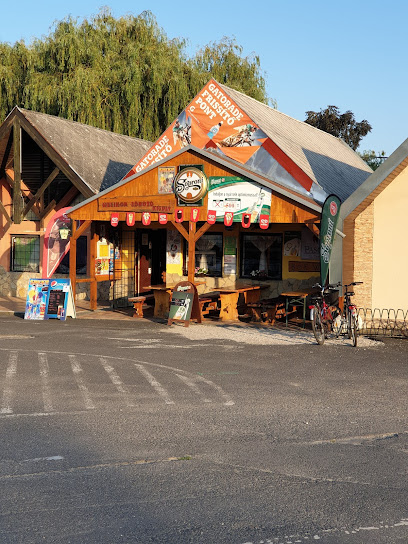
512 Club
Discover the heart of Keszthely's nightlife at 512 Club, where live music meets a vibrant pub atmosphere for an unforgettable experience.
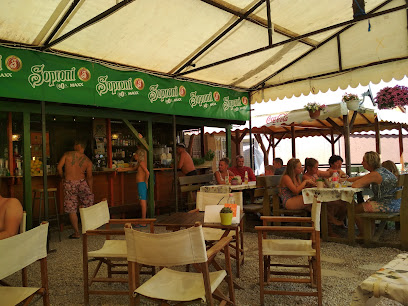
Dick Turpin's
Unwind at Dick Turpin's Bar in Keszthely, where vibrant nightlife meets friendly service, perfect for tourists seeking local flavors.
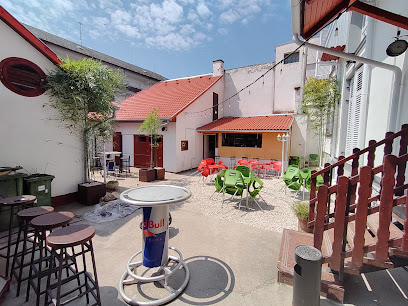
Sziget Café
Discover Sziget Café at Lake Balaton for a perfect blend of local flavors and stunning lakeside views.
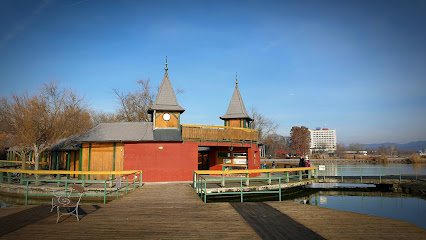
Bloom Bár
Experience the lively atmosphere and local flavors at Bloom Bár, a must-visit bar in Keszthely, perfect for leisure and nightlife.
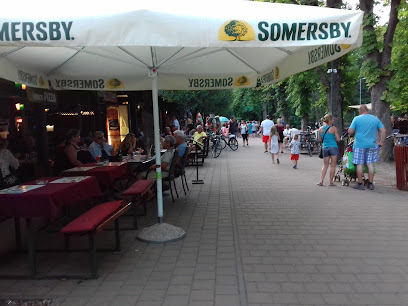
Matróz Kocsma
Experience the authentic Hungarian pub atmosphere at Matróz Kocsma in Keszthely, where great drinks and local culture come together.

Mámor bár
Experience the vibrant nightlife of Keszthely at Mámor Bár, where great drinks and lively ambiance await you.
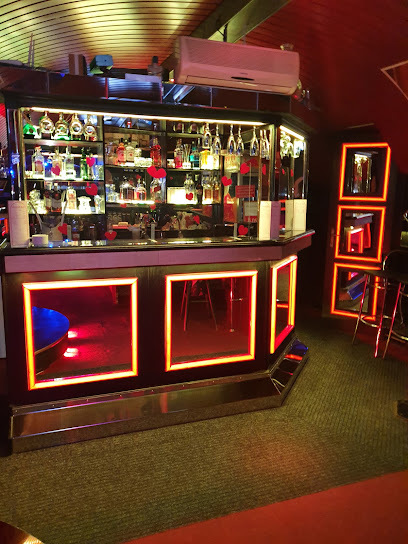
Fonográf Music & Pub
Discover Fonográf Music & Pub in Keszthely - a lively bar with great music, local drinks, and a welcoming atmosphere for all tourists.
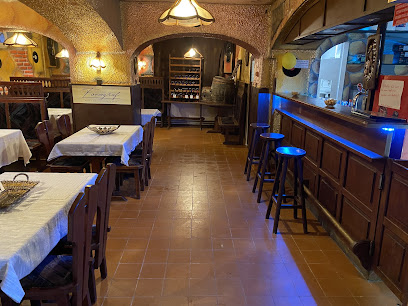
Local Phrases
-
- HelloHelló
[heh-loh] - GoodbyeViszontlátásra
[vee-son-tlah-tah-shrah] - YesIgen
[ee-gen] - NoNem
[nem] - Please/You're welcomeKérem
[key-rem] - Thank youKöszönöm
[kur-suh-nuhm] - Excuse me/SorryElnézést
[el-nay-zayst] - How are you?Hogy vagy?
[hoj vahdj] - Fine. And you?Jól vagyok. És te?
[yol vahdj-ok. ays teh] - Do you speak English?Beszélsz angolul?
[be-sayl-s ang-oh-lool] - I don't understandNem értem
[nem ayr-tem]
- HelloHelló
-
- I'd like to see the menu, pleaseSzeretnék megnézni a menüt, kérem
[ser-et-nayk meh-nyez-nee ah meh-nooht, key-rem] - I don't eat meatNem eszem húst
[nem es-em hoosht] - Cheers!Egészségére!
[ay-gays-she-gay-re] - I would like to pay, pleaseSzeretnék fizetni, kérem
[ser-et-nayk fee-zeht-nee, key-rem]
- I'd like to see the menu, pleaseSzeretnék megnézni a menüt, kérem
-
- Help!Segítség!
[she-geet-sayg] - Go away!Menj el!
[meyn yell] - Call the Police!Hívd a rendőrséget!
[heed ah ren-dur-shay-get] - Call a doctor!Hívd orvost!
[heed or-vohst] - I'm lostElvesztem
[el-veh-stem] - I'm illBeteg vagyok
[beh-teg vahdj-ok]
- Help!Segítség!
-
- I'd like to buy...Szeretnék vásárolni...
[ser-et-nayk vah-shah-rohl-nee] - I'm just lookingCsak nézelődöm
[chak nay-zeh-loh-dohm] - How much is it?Mennyibe kerül?
[men-yee-beh keh-rool] - That's too expensiveTúl drága
[tool draa-gah] - Can you lower the price?Le tudnád engedni az árat?
[leh too-dnahd eng-ehd-nee ahz ah-raht]
- I'd like to buy...Szeretnék vásárolni...
-
- What time is it?Mennyi az idő?
[men-yee ahz ee-doh] - It's one o'clockEgy óra van
[edj oh-rah vahn] - Half past (10)Fél tizenegy
[fayl tee-zen-ay] - MorningReggel
[rege-gel] - AfternoonDélután
[deyl-oo-tahn] - EveningEste
[eh-shteh] - YesterdayTegnap
[teg-nahp] - TodayMa
[mah] - TomorrowHolnap
[hol-nahp] - 1Egy
[edj] - 2Kettő
[ket-toh] - 3Három
[haa-rom] - 4Négy
[nayj] - 5Öt
[oht] - 6Hat
[haht] - 7Hét
[hayt] - 8Nyolc
[nyolts] - 9Kilenc
[kee-lentz] - 10Tíz
[teeez]
- What time is it?Mennyi az idő?
-
- Where's a/the...?Hol van a...
[hol vahn ah...] - What's the address?Mi a cím?
[mee ah cheem] - Can you show me (on the map)?Meg tudnád mutatni (a térképen)?
[mehg too-dnahd moo-taht-nee ah tair-kay-pen] - When's the next (bus)?Mikor jön a következő (busz)?
[mee-kohr yern ah kuh-vehk-tay-zoh boos] - A ticket (to ....)Egy jegyet (....-ig)
[edj yeh-geht (....-eeg)]
- Where's a/the...?Hol van a...
History of Keszthely
-
Keszthely has a rich history that dates back to ancient times. Archaeological findings suggest that the area was inhabited during the Roman era. The town was known as 'Valcum' in Roman times and served as a significant settlement in the province of Pannonia. Remnants of Roman villas, baths, and fortifications reflect this ancient heritage.
-
During the Middle Ages, Keszthely became an important hub for trade and agriculture. The town was granted market town status in 1421 by King Sigismund of Luxembourg, which significantly boosted its economic prominence. The Gothic-styled Church of Our Lady of Hungary, built during this period, stands as a testament to the town's medieval past.
-
The illustrious Festetics family played a crucial role in shaping Keszthely's history. In the 18th century, Kristóf Festetics, a member of this noble family, began constructing the grand Festetics Palace, a magnificent Baroque estate that remains one of Hungary's most iconic landmarks. The palace, completed in the early 19th century, includes a library, stables, and an extensive park.
-
In the 19th century, Keszthely became a focal point for agricultural and educational reform. György Festetics, a descendant of the Festetics family, founded the Georgikon in 1797, the first agricultural college in Europe. This institution played a pivotal role in modernizing agricultural practices and education in Hungary.
-
Keszthely, like much of Hungary, endured significant hardships during World War II. The town was occupied by German forces and later by the Soviet Red Army. The aftermath of the war brought profound changes, including nationalization and economic restructuring. Despite these challenges, Keszthely managed to preserve its cultural heritage and historical landmarks.
-
Today, Keszthely is a vibrant town that beautifully blends history with modernity. It serves as a cultural and tourist hub, attracting visitors to its historical sites, such as the Festetics Palace, the Balaton Museum, and the scenic shores of Lake Balaton. The town hosts numerous cultural festivals and events, celebrating its rich heritage and dynamic community.
Keszthely Essentials
-
Keszthely is located in the western part of Hungary, on the shores of Lake Balaton. The nearest international airport is Budapest Ferenc Liszt International Airport, approximately 190 kilometers away. From Budapest, you can take a direct train to Keszthely, which takes about 2.5 hours. Alternatively, there are bus services from Budapest's Népliget bus station to Keszthely. For those driving, the M7 motorway connects Budapest to Keszthely, and the journey takes approximately 2 hours by car.
-
Keszthely is a small and walkable town, making it easy to explore on foot. For longer distances, local buses are available and connect to nearby towns and villages. Taxis are also readily available, and car rentals can be arranged for those who wish to explore the surrounding areas at their own pace. Bicycle rentals are popular, especially for exploring the scenic routes around Lake Balaton.
-
The official currency in Hungary is the Hungarian Forint (HUF). Credit and debit cards are widely accepted in hotels, restaurants, and shops in Keszthely. However, it is advisable to carry some cash for small purchases, especially in local markets and smaller establishments. ATMs are available throughout the town, and currency exchange services can be found at banks and exchange offices.
-
Keszthely is generally considered a safe destination for tourists. Standard precautions should still be taken, such as avoiding poorly lit areas at night and keeping an eye on personal belongings in crowded places. There are no specific high-crime areas targeting tourists, but maintaining vigilance and awareness of your surroundings is always recommended.
-
In case of emergency, dial 112 for immediate assistance, which is the European emergency number. The local police station and medical facilities are available in Keszthely. It is recommended to have travel insurance that covers medical emergencies. Pharmacies are available in the town for minor health issues, and they can provide over-the-counter medications.
-
Fashion: Do dress modestly, especially when visiting religious sites. Avoid overly revealing clothing. Religion: Do respect local customs and traditions. Public Transport: Do validate your ticket before boarding. Don't eat or drink on public transport. Greetings: Do greet people with a friendly 'Hello' (Szia) or 'Good day' (Jó napot). A handshake is also common. Eating & Drinking: Do try local dishes and wines. Don't leave large tips, as a service charge is often included in the bill.
-
To experience Keszthely like a local, visit the local markets where you can buy fresh produce and traditional Hungarian goods. Engage with locals, who are often friendly and willing to share stories about the town's history and culture. Don't miss visiting the Festetics Palace, a Baroque palace that is one of the main attractions. For a relaxing experience, take a stroll along the shores of Lake Balaton or rent a bike to explore the scenic routes. Try the local cuisine, including fish dishes from the lake, and enjoy a glass of Balaton wine.
Nearby Cities to Keszthely
-
Things To Do in Zalaegerszeg
-
Things To Do in Veszprem
-
Things To Do in Szombathely
-
Things To Do in Szekesfehervar
-
Things To Do in Gyor
-
Things To Do in Pecs
-
Things To Do in Ptuj
-
Things To Do in Sopron
-
Things To Do in Maribor
-
Things To Do in Tatabanya
-
Things To Do in Eisenstadt
-
Things To Do in Rogaška Slatina
-
Things To Do in Graz
-
Things To Do in Zagreb
-
Things To Do in Bratislava












